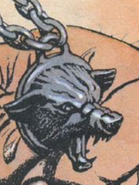(updated the history section) |
m ("its", not "it's (it is)".) |
||
| Line 22: | Line 22: | ||
== History == |
== History == |
||
=== Formation === |
=== Formation === |
||
| − | The [[Order of Witchers]] had almost completely splintered, only a small group of witchers remained in |
+ | The [[Order of Witchers]] had almost completely splintered, only a small group of witchers remained in its keep after the third group of witchers had left to build their own school. These last witchers left the Orders castle and travelled east.<ref name="awj">{{AWJ}}</ref> They decided to settle in the north in the caves of [[Kaer Morhen valley|the Morhen Valley]].<ref name="tw3">{{Tw3}}</ref> |
In the 11th century they finished the construction of [[Kaer Morhen]] and moved the school out of the caves into their new home<ref name="awj" /> |
In the 11th century they finished the construction of [[Kaer Morhen]] and moved the school out of the caves into their new home<ref name="awj" /> |
||
Revision as of 15:50, 22 September 2020
School of the Wolf was a school of witchers headquartered at Kaer Morhen in Kaedwen.[1]
History
Formation
The Order of Witchers had almost completely splintered, only a small group of witchers remained in its keep after the third group of witchers had left to build their own school. These last witchers left the Orders castle and travelled east.[2] They decided to settle in the north in the caves of the Morhen Valley.[3]
In the 11th century they finished the construction of Kaer Morhen and moved the school out of the caves into their new home[2]
Before the Pogrom
In the days of its glory, the School of the Wolf was one of the most recognized of the witcher schools. Its members gained the reputation of professional and reliable monster slayers.[4][3] According to a legend, it is said that at some point of the history they hosted Count Esteril Thyssen and his lover Agnes, who were hiding from Videmont's wrath.[5]
The two massacres
The second half of the 12th century[N 1] saw a massive attack on Kaer Morhen by an enraged mob led by a group of mages and priests. All witchers present at the keep were killed. Though the pogrom was condemned, the school never regained its full functionality.[1]
For some time since then schools of the Wolf and of the Cat were funded by Kaedweni monarchs. The student exchanges took place and some older witchers befriended each other, though most of the students did not trust each other, which often resulted in brawls and arguments.
King Radowit II however, under the influence of his court mage Astrogarus and druids, perceived revival of the witcher schools as a threat to his rule. His manipulations made master Treyse of the Cats engage in a plot against the Wolves – during the Witcher Tournament, he and some of the students under his influence ambushed the unaware Wolves. After most of the Wolves died, the King ordered soldiers to kill the Cats as well.[6]
Contemporary situation
The last children were trained at Kaer Morhen in the 1230s. Knowledge about Trials and mage assistants eventually vanished since then. By the 1260s the only living member of the "old" (pre-pogrom) witchers of the Wolf was Vesemir. He, and a couple of younger ones, used to spend winters in the keep. They welcomed some witchers from other schools like Coën,[1] but Cats[7] and Vipers were banned.
The early 1270s saw the ultimate downfall of the school, when it fell under the attacks of the Salamandra and the Wild Hunt.[3]
Members
Witchers
Mages
Affiliated
Gallery
Footnotes
- ↑ The exact date is never specified, but Blood of Elves states that it happened about half a century before Triss Merigold was born.
References
- ↑ 1.0 1.1 1.2 Blood of Elves
- ↑ 2.0 2.1 Template:AWJ
- ↑ 3.0 3.1 3.2 3.3 3.4 3.5 3.6 The Witcher 3: Wild Hunt
- ↑ The World of the Witcher
- ↑ Dynastic descriptions
- ↑ 6.0 6.1 6.2 6.3 6.4 6.5 6.6 6.7 6.8 Zdrada
- ↑ Season of Storms
- ↑ The Witcher 3: Wild Hunt - Blood and Wine expansion
- ↑ 9.0 9.1 9.2 The Witcher
- ↑ The Witcher Role-Playing Game
- ↑ Template:Witcher TV
| Witcher schools | |
|---|---|




